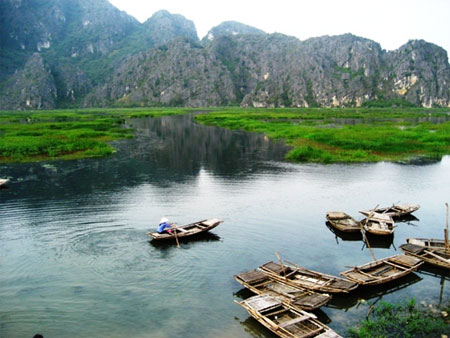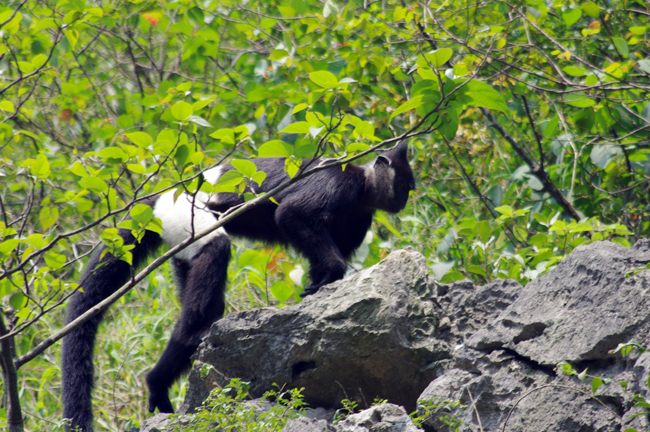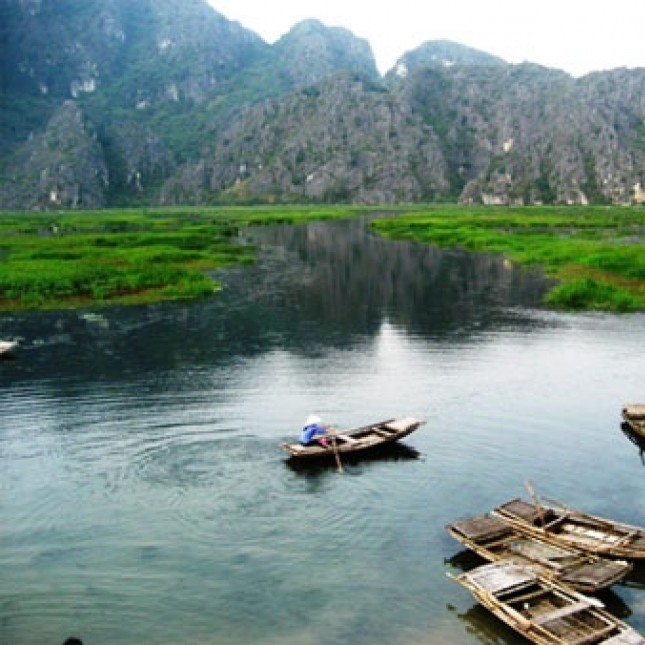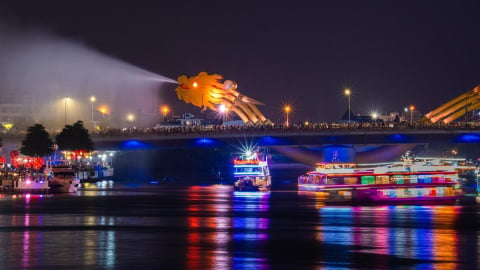From Hanoi, follow National Highway 1A about 90km south to Gian Khau intersection, turn right onto Provincial Road 477 for nearly 8km then turn right for another 2km, visitors will arrive at Van Long wetland nature reserve.
With an area of over 3,000 hectares, spread over 7 communes: Gia Hung, Lien Son, Gia Hoa, Gia Lap, Gia Tan, Gia Thanh and mainly in Gia Van commune of Gia Vien district, Van Long is the largest wetland nature reserve in the Northern region. This place is like a watercolor painting with limestone mountains reflecting day and night on the clear blue water surface.

The limestone mountain range here is named according to the characteristic shape of each mountain such as: Hoang Quyen Mountain, Hom Sach Mountain, Da Ban Mountain, Meo Cao Mountain, Co Tien Mountain, etc. Inside these rocky mountains are 32 caves with characteristic beauty such as: Ca Cave, Bong Cave, Rua Cave, Chanh Cave, Thung Doi Cave, etc. In particular, on the cliffs are carved strange images such as: ancient human figures holding an axe in one hand and a bow and arrow in the other; a group of people holding hands and dancing together...

The amazing thing is that normally tourists will not see these images, but if water is poured on the rocks, the images will appear clearly. Van Long is also known by tourists as a "waveless bay" because when going by boat in the reserve, the water surface will be as calm as a mirror.
The forest ecosystem in Van Long is very diverse with about 722 plant species, including 687 species of vascular plants, 35 species of aquatic plants, especially 8 species listed in the Vietnam Red Book (Kieng, Lat Hoa, Tue Ban, Cot Toai Boi, Sang, Bach Bo, Ma Tien, Hoa Uan); 39 animal species, including 12 rare species (bear, mountain goat, giant loris, red-faced monkey, zebra civet, clouded leopard, leopard..., especially langurs; 38 species of frogs, toads, reptiles, including 9 reptile species listed in the Vietnam Red Book (king cobra, monitor lizard, python, rat snake, red-headed striped snake); 100 species of birds. In the dry season, Van Long is also the wintering site of many migratory birds from the North such as: Bonelli's eagle, grey heron, great egret, teal, egret, white stork, heron...

Along with the beautiful natural scenery, Van Long also has many valuable historical and cultural relics such as: Dich Long Pagoda, Hoa Lu Cave, King Dinh Tien Hoang Temple, Saint Nguyen Temple... along with the unique cultural identity of the community in the Red River Delta. Therefore, Van Long has all the elements to develop community tourism.
Since early 2005, with the help of the Department of Culture, Sports and Tourism of Ninh Binh, Gia Van commune - home to more than 5,300 people, has pioneered in implementing a community-based tourism model in Van Long. Accordingly, in addition to the main livelihoods of growing rice, crops, raising livestock and poultry, the local people also do additional jobs providing tourism services, from organizing receptions to introducing and promoting the unique natural and cultural values of the locality to tourists.

Therefore, when coming here, in addition to the opportunity to experience daily activities with the local people such as: going to the market, cooking, milling rice, pounding rice, hoeing, bailing water with a bucket, a rope bucket, lifting a net, catching crabs on the edge of the field, catching fish, sleeping in an ancient house with a wooden frame and a dirt floor..., tourists also have the opportunity to join a tour by buffalo cart or ox cart to visit the scenery of the Northern countryside, sit on a bamboo boat to admire the charming beauty of the mountains and rivers in the Van Long nature reserve...

Currently, Gia Van commune is developing this model on a large scale to exploit the local tourism potential and strengths. Initially, the commune government has done a good job of ensuring security, order, and environmental sanitation; coordinating with the Tourism Department and the Ninh Binh Provincial Tourism Promotion Center to organize training courses on tourism knowledge and cultural behavior towards tourists for the people; coordinating with travel agencies to promote and advertise local tourism. In addition, the Association of the Elderly is at the forefront of the movement of planting trees and ornamental plants to create a green, clean, and beautiful tourism environment...
With a new form of tourism by the government and people of Gia Van commune, in the future, Van Long will become a typical eco-tourism and community destination in Ninh Binh.


































